|
|
Please thoroughly read this page before filming videos
Mandatory rules
If you don't follow these mandatory rules we won't be able to use your videos at all.
- Film in Full HD with 50 or 60 frames per second
- Your video must be in the format 1920x1080 50i/50p/60i/60p on Memory Stick or SD card. We can't accept videos with a frame rate of 25 or 30 fps. Make sure that your videocamera is set to the highest datarate, for AVCHD that's usually 28 Mbps.
- Never tilt the videocamera.
- Hold the videocamera strictly horizontally in order to avoid sloping horizons and diagonally leaning girls. Never tilt the camera to the left or right.
- Wide-angle only.
- Shoot all videos in normal wide-angle, i.e. in 30mm to 45mm focal length (according to normal 35mm film). Never use extreme wide-angles (anything below 28mm) or tele lens (anything over 50mm). For most cameras this means: Keep the zoom lever at the wide-angle position and never touch it.
- Never use the zoom.
- Do NOT zoom in and out. Never touch the zoom lever. If you want to film a close-up do NOT zoom in but walk some steps closer while keeping the lens at the wide-angle position.
- Hold the videocamera absolutely still with both hands
- We can't use shaky videos. They look bad. Hold the videocamera as still as possible with both hands. Avoid any jerky movements. Keep your eyes on the camera display while filming (don't look around).
- Use the Image Stabilizer
- Switch on the Image Stabilizer, often referred as Steady Shot or O.I.S or similar terms. Videos without Image Stabilizer are shaky and not usable.
- Always film with a shutter speed of 1/50s (Europe) or 1/60s (USA)
- You don't have to care about the shutter speed when you're filming indoors. The shutter speed may differ from 1/50s or 1/60s only if you're filming outdoors in bright daylight. If that's the case set the shutter speed manually to 1/50s or 1/60s, otherwise motions won't look smooth.
- Don't edit the videos
- Send the videos in their original format (.mts or .mov), as taken directly from the memory card of the videocamera. Never edit the videos in any way. We'll cut out the bad footage anyway.
- Don't use built-in lamps
- If your videocamera has a built-in lamp, don't use it. If you're close to the subject the built-in lamp produces a bright spot in the middle of the picture, which looks terrible.
- Don't use any special effects
- Don't use things like Slow Motion, Fade In/Out, Old Style Video Effects, High Shutter Speeds and other fancy stuff your videocamera offers.
- Don't talk while filming
- When you talk you will lose concentration on the videocamera and you will tend to shake it. So if you want to give instructions to the model, please stop the video recording first, tell the model what you want, then start the recording again.
- Of course the model may talk while being filmed. It's great to hear the model speak in the video.
Important advices
Please follow these advices to get good videos.
- 1. Watch the edges of the LCD to control videocamera movement.
- To avoid shaky videos it's a good idea to watch the edges of the picture inside the LCD monitor to control videocamera movement (rather than just staring into the middle). Make sure that the picture doesn't move compared to the edges of the LCD. If so, the videocamera is still.
- Don't follow every slight movement of the model, but keep the videocamera still while the model is moving inside the picture frame. Follow the model only if she tends to leave the picture frame. For instance, instead of spinning around the model with the videocamera, keep it still while the model rotates.
- 2. Never mix artificial light with daylight.
- Don't film at places lit both by artificial light (light bulbs) and daylight. This mixture results in terrible coulour casts. Please film only at (a) or (b):
-
- (a) Artificial Light Only. e.g. a room lit by 2x500W halogen-lamps. Make sure to have absolutely no daylight in the room.
- (b) Daylight Only. e.g. a room lit by a bright window. Make sure to have absolutely no artificial lights in the room. Switch off all light bulbs.
- 3. Don't constantly fly around with the videocamera. Keep it still for dozens of seconds.
- Give the viewers time to admire the body of the girl. You can do that by holding the videocamera absolutely still for a while (e.g. 30 to 40 seconds), then change position and hold it still again. Do not constantly fly around with the videocamera. The viewer can't really enjoy a nice part of the girl if the videocamera shows it only for some seconds and constantly moves. Film at least 30 seconds in each position while NOT moving the videocamera.
- When you're filming you might think that 30 seconds are too long for doing nothing with the videocamera, but that's ok. The girl must move, not the videocamera.
- If you need to move the videocamera (e.g. to follow the model's motion, or to do an overview from thighs to breasts) please do it gently and as slowly as possible.
- 4. Set the WHITE BALANCE manually.
- If the WHITE BALANCE is set to AUTO, the color of the model's skin will constantly change, which looks very bad. Please set the WHITE BALANCE manually. It's easy, as you can do that with all videocameras and you only need to switch between two settings:
-
- When filming Outdoors set the WHITE BALANCE to Sunny
- When filming Indoors with Halogen-Lamps set the WHITE BALANCE to Artificial Light
- When filming Indoors with Daylight set the WHITE BALANCE to Sunny
- 5. Never have a bright light behind the model.
- If the camera is set to AUTO exposure and it is seeing a bright light (e.g. a lamp, a bright window or the sun) the AUTO exposure will darken the picture and the video gets unusable. So make sure that bright lights are always in the rear of the photographer (so that the camera doesn't see them).
-
 |
Bad
The bright window in the background darkens the picture. To avoid that turn 180 degrees so that the bright window is in the rear of the photographer. |
- 6. Fill the picture frame with the model. Avoid wasted space.
- Always fill the picture frame with the model, either vertically or horizontally. If the model's head is visible make it touch the upper edge of the picture frame. Avoid wasted space above the model's head.
-
 |
Bad
There's wasted space above the model's head. The camera should move down. |
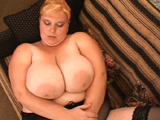 |
Good
There's no wasted space above the model's head. The head touches the upper edge of the picture frame. |
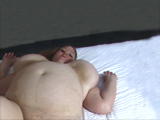 |
Bad
There's wasted space at the top and at the right side. Don't film like that. |
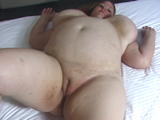 |
Good
Move the camera down and left until the model fills the picture frame. It's much better to see the thighs instead of the grey wall. |
- 7. Don't stare just into the middle of the camera display. Check its edges.
- Many photographers look only into the middle of the camera display and don't care about its edges. Therefore they're placing important parts of the model's body (head, breasts) right into the middle of the picture frame. This results in bad picture compositions with wasted space (see examples below). So while filming always check the edges of the camera display to notice wasted space and then slightly and gently move the camera to get a good picture composition with no wasted space.
-
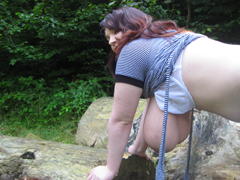 |
Bad
The photographer has just stared into the middle of the LCD, and therefore he placed the breasts in the middle of the picture frame. He didn't notice the wasted space on the left side. That's bad. It would be much better to move the camera slightly to the right so we can see the model's beautiful ass rather than some useless trees. |
- Here are another four bad examples. The photographer hasn't checked the edges of the picture frame and therefore didn't notice the wasted space:
-
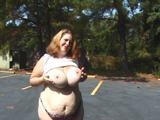 |
 |
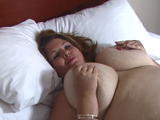 |
 |
Bad
There's wasted space at the top. |
Bad
There's wasted space at the bottom. |
Bad
There's wasted space at the left and at the top. |
Bad
There's wasted space at the right. |
- 8. Don't cut off the lower edge of the breasts.
- Always make sure that the lower edge of the breasts is visible. People want to see the entire curve of the breasts.
-
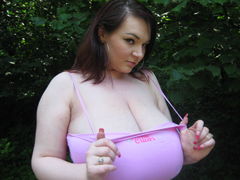 |
 |
Bad
The lower edge of the breasts is cut off. Don't film like that, but move the camera slightly down. |
Good
The lower edge of the breasts is visible. This gives a good impression of the breast's curves. |
- 9. Beware of dark backgrounds.
- If the camera is set to AUTO exposure it will try to get a good average exposure for all subjects visible in the picture (background and model). The larger the subject the more it will influence the exposure metering. So if the background is dark the camera will brighten it up and the model will get too bright (overexposed).
-
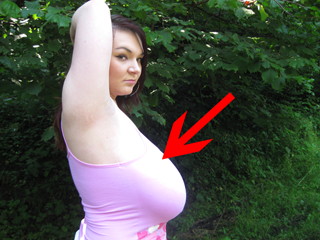 |
Bad
Due to the dark background the camera brightens the picture and the model's breasts get overexposed (too bright, no details visible, just a plain white area).
To avoid that either
- set the exposure manually, or
- go to a another place, or
- turn to get another background, or
- set EXPOSURE COMPENSATION to "-1"
|
About the content of the videos
Basically there are no rules for the content. You can use any pose or scene or dress you like. But still please consider the following:
- The more variety, the more video footage we can buy.
- There should be a lot of variety and action in the video. Don't film the model sitting in a chair doing nothing or lying on the bed in the same pose for ten minutes just fumbling her breasts.
- A good idea is to film the model doing any sort of action, e.g. the model could work in the kitchen, or hang up laundry, or clean the windows, or vacuum-clean, or walk outside, or dance, or take a shower, or do anything else. It's great if the model does the action both fully clothed and topless (or even naked).
- Change clothes every 10 to 15 minutes.
- Don't film dozens of minutes with the same outfit. The model should change clothes after 10 to 15 minutes of video.
- Wear tight clothes.
- Don't use fancy stuff like feather boas, pearl necklets, Santa Claus costumes or negligees. Please have the model wear tight clothes as going the streets, for instance tight jeans, leggins, miniskirts, tight tops, tight secretary outfits, nylons, high heels, anything that's tight and sexy. Don't use baggy clothes that are hiding the curves of the model's body.
- The model shouldn't be naked or topless all the time.
- Film all stages from fully clothed to topless or naked. Within a ten minutes video the model doesn't necessarily have to be clothed first and topless at the end. You may alternate from clothed to naked several times within a short video. For instance the model is wearing a tight sweater, so film some minutes clothed, then have the model lift the sweater so we see her breasts below and film some minutes, then film clothed again, then film agin with the breasts stick out from the top of the sweater, and so on.
- Don't film just "Head And Breasts" photos.
- That's important. It's boring to constantly have to watch only the upper part of the model's body (Head And Breasts). Please film all parts of the model's body including her ass, belly, thighs, legs. It's great to watch all parts of a curvy body in motion.
- Let the breasts often hang freely.
- The model shouldn't fumble her breasts all the time. We've got many complaints from our members about models constantly holding and kneading their breasts with their hands. Please let the breasts hang freely at least in half of the footage.
|

